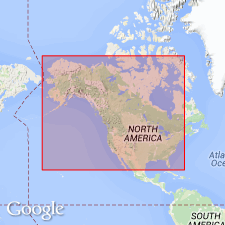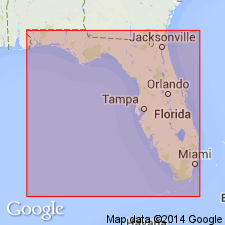
- Usage in publication:
-
- Jacksonboro limestone*
- Modifications:
-
- Named
- Dominant lithology:
-
- Limestone
- AAPG geologic province:
-
- South Georgia sedimentary province
Summary:
Jacksonboro limestone is a stratum of limestone containing numerous casts of shells and occasionally a silicified specimen, on the whole not unlike Tampa limestone. This stone was formerly burned for lime. The section near the confluence of Brier Creek and Beaver Dam Creek shows 5 ft of ferruginous sand and over 12 ft of compact marly rock with fossils. At present the presumption is obviously in favor of an early Miocene age for this deposit.
Source: GNU records (USGS DDS-6; Reston GNULEX).

- Usage in publication:
-
- Jacksonboro limestone*
- Modifications:
-
- Areal extent
- AAPG geologic province:
-
- South Georgia sedimentary province
Summary:
Pg. 1573. Author has no reasonable doubt that the horizon of Jacksonboro white limestone is practically that of the Tampa limestone.
[GNC remark (ca. 1936, US geologic names lexicon, USGS Bull. 896, p. 1036): Later studies of T.W. Vaughan and C.W. Cooke showed this limestone to be a bed in Tampa limestone.]
Source: US geologic names lexicon (USGS Bull. 896, p. 1036).
For more information, please contact Nancy Stamm, Geologic Names Committee Secretary.
Asterisk (*) indicates published by U.S. Geological Survey authors.
"No current usage" (†) implies that a name has been abandoned or has fallen into disuse. Former usage and, if known, replacement name given in parentheses ( ).
Slash (/) indicates name conflicts with nomenclatural guidelines (CSN, 1933; ACSN, 1961, 1970; NACSN, 1983, 2005, 2021). May be explained within brackets ([ ]).

